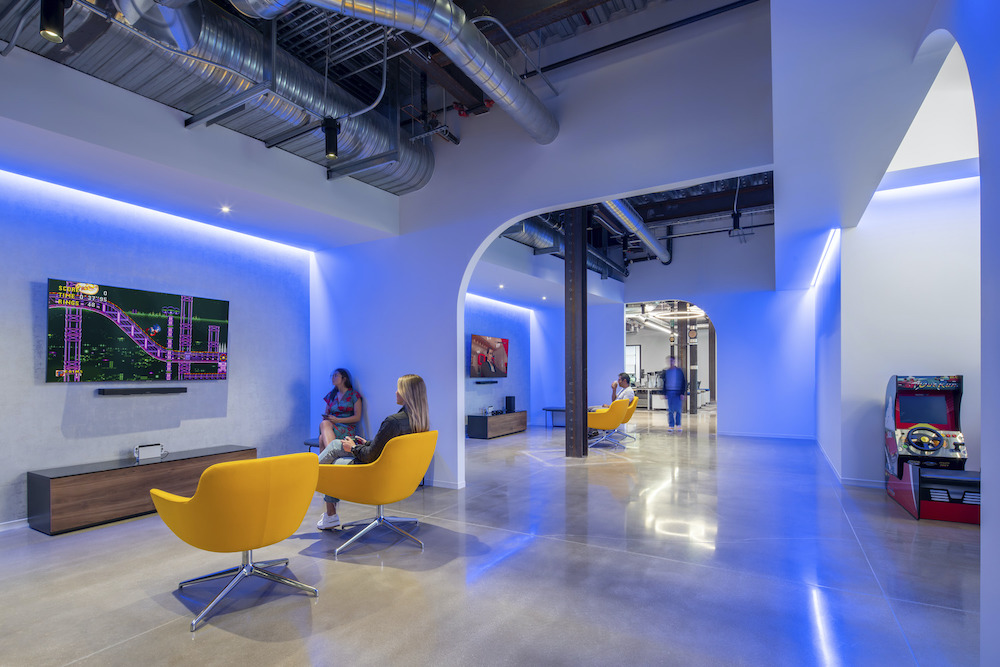Inclusive design recognizes the importance of creating environments that support a wide range of physical abilities and neurodiverse individuals. Spaces that respond to a wider range of needs, sensitivities and behaviors benefit everyone.
Everyone is different in terms of how they process information from their physical and social environment. Harnessing the strengths and talents of neurodiverse individuals starts with recognition of these differences to create workplace environments that reflect the variations in the ways people respond to stimuli and interact with physical spaces and one another.
Neurodiversity is commonly associated with autism spectrum disorder (ASD), attention-deficit/hyperactivity disorder (ADHD) and dyslexia, as well as other diagnosed learning disorders and age-related illnesses like Alzheimer’s and Parkinson’s. But neurodiversity itself is more widely shared, as it encompasses all variations in human thinking, making up approximately 15–20% of the general population.
Understanding the different needs of the neurodiverse can provide a wide variety of benefits for workplace design. There is an opportunity to provide spaces that spark creativity and productivity in different employees.
Neurodiverse individuals can be supported, inspired and nurtured by providing an inclusive culture…
Studies show neurodiverse individuals play a valuable role for companies. Traits such as hyperfocus, complex nonlinear thinking, pattern recognition, attention to detail, sensory sensitivity and high energy can spur creativity, innovation and out-of-the-box thinking. Many well-known scientists, engineers and entrepreneurs have been identified as neurodivergent, including Stephen Hawking, Thomas Edison, Albert Einstein, Alan Turin and Henry Ford.
Neurodiverse individuals can be supported, inspired and nurtured by providing an inclusive culture that recognizes different needs and environments that offer a variety of choices, as opposed to a one-size-fits-all approach. Recent research highlights four key areas where design can play a key role in supporting neurodiversity.
Stimulation and Naturalness
Perhaps the most difficult design element to balance is stimulation. Many neurodiverse individuals possess heightened sensitivity to environmental stimuli, including light, color, patterns, textures, sounds and movement. Too many stimuli, such as busy patterns and poor acoustics, can fatigue the senses, while too few can seem boring. When neurodiverse individuals can access their appropriate level of stimulation, they are able to hyperfocus on tasks and sustain that focus for longer durations.
To avoid overstimulation, design solutions should focus on naturalness within the built environment, as elements of nature tend to be calming yet offer a level of complexity that is interesting but not overwhelming. It’s beneficial to offer a variety of spaces that allow employees to select microenvironments to suit their needs. In many cases, we look to design spaces that evoke a sense of calm, and then disperse smaller active zones for people who are comfortable operating in high-stimulation settings.
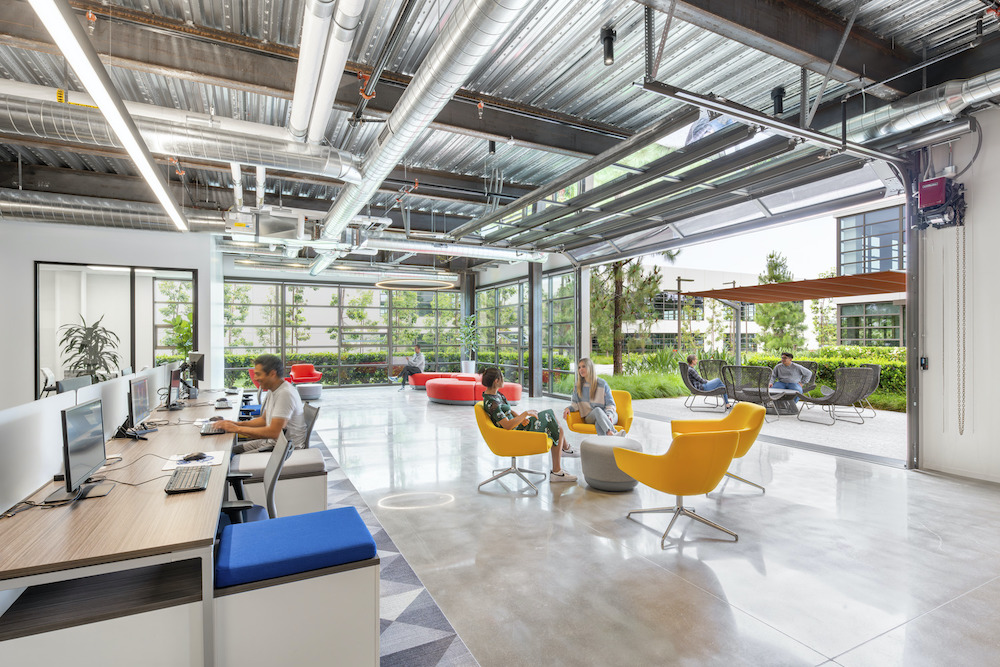
SEGA’s renovated offices in Irvine, California, blend naturalness and complexity to suit the needs of a neurodiverse workforce. Partial walls create distinct zones that vary in their levels of stimulation. Employees have spaces to work alone or in small groups, or take a gaming break on one of the company’s vintage arcade machines. Soft blue cove lighting creates a calming effect. In the main workspace, open workstations are placed adjacent to a lounge area directly attached to an exterior space, giving employees a wide spectrum of environments to choose from.
Flexibility, Adjustability and Opportunities for Movement
Creating microenvironments demands a deft balance and the need for flexibility. Furniture selection, acoustic design and lighting levels can offer users greater control over their environment. For some neurodiverse individuals, a restricting environment with limited flexibility may be more distracting.
Mobile and adjustable furniture like sit-stand desks and seating that can roll, tilt or provide continuous movement gives individuals the ability to utilize the physical environment to address the need for movement on an individual scale.
Rather than restricting body movement, designs that support and promote fidgeting and movement provide an outlet for neurodivergent individuals who may be under stimulated or require a distraction in an overly stimulating environment. This enhances focus for individuals with ADHD or other attention-related conditions because it allows them to fidget and move their body, so they are not distracted by resisting the need to do so.
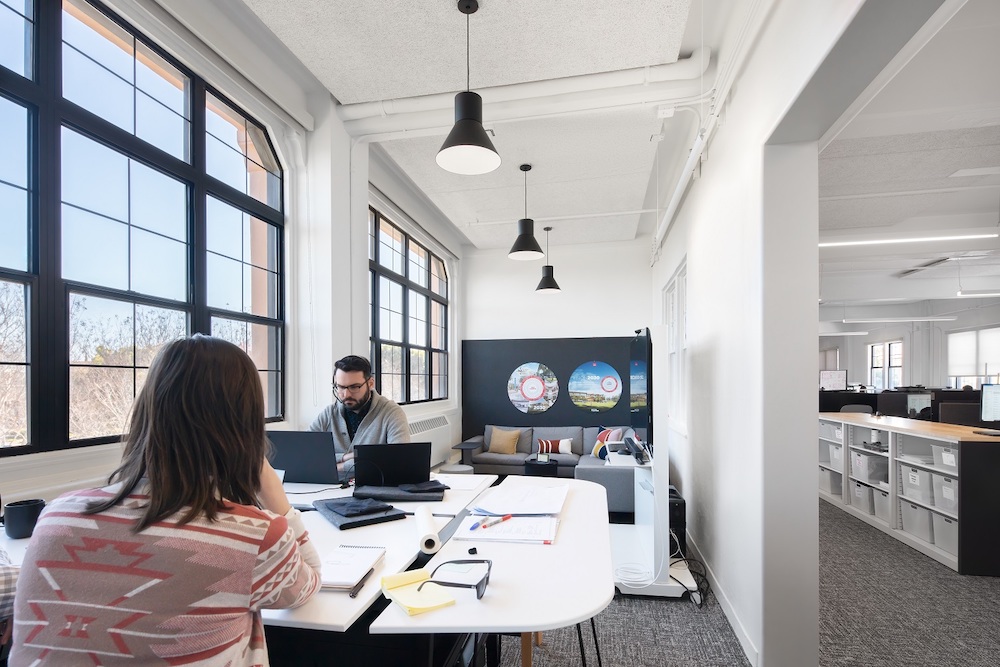
Providing multiple access points between indoor and outdoor spaces is an active design tactic that encourages opportunities for movement and exploration through the spaces. In workplace environments, many companies are electing to operate in more balanced environments that neither restrict movement nor provide completely unrestricted space.
LPA’s new studio space in San Diego offers a wide range of seating types that enable individuals to situate themselves in a way that satisfies a range of tactile stimulation and people’s need to move. Wobble stools and swivel chairs enable fidgeting, while high-top tables and saddle-style seats allow people’s legs to dangle, enabling micro-movements and strengthening attention. Couches allow workers to sink in and ground themselves, which helps some individuals engage in deeper focus. The studio’s location in the mixed-use Liberty Station design district enables walking meetings – something teammates do frequently now since taking occupancy in early 2023.
Supporting Different Levels of Privacy for Social Interactions
Individuals with neurodiversity have varying levels of comfort in social interactions — for some, it can be completely overwhelming. When any work-related environment caters only to group activities, individuals may be forced into unwanted social situations, making it difficult to refocus on a task. Providing a range of space types and sizes allows neurodiverse individuals to control their desired level of interaction and privacy, and consequently hone their focus.
Privacy does not necessarily mean complete seclusion from others. There are different ways for people to experience being alone and being together. Varied levels of privacy include being alone in private or alone among others in public, compared to being together with others in private or together with others in public.
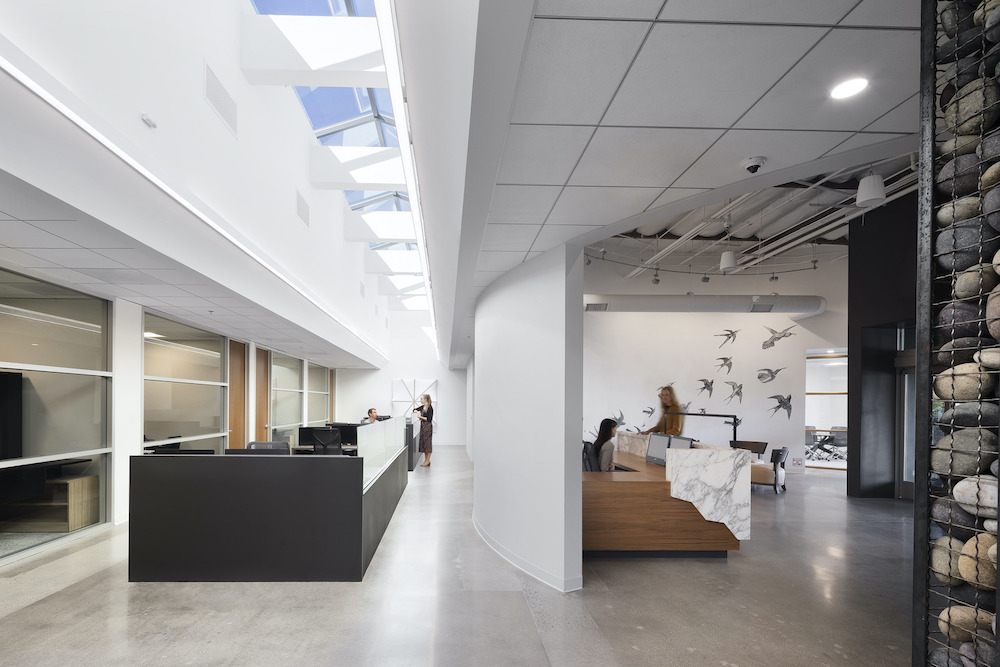
In the newly renovated headquarters for RiverRock Real Estate Group, in Orange County, California, the floor plan has the ability to shift and change to reflect the needs of employees.
The design employs zoning, which features a mix of private, semiprivate and open zones that cater to the evolving needs of their employees.
Providing a variety of spaces allows people, especially neurodivergent individuals, to regulate their desired level of interaction and privacy. Often, with too much open space, occupants are stripped of the opportunity to decide whether, when and how long they want to engage with others, which can be very overwhelming. Research has shown that the inability to control interactions intuitively discourages occupants from using the space.
Simple Wayfinding
Signage and other mechanisms situated at eye level customarily play a key role in helping individuals comfortably navigate a space. But some neurodivergent individuals, particularly those with ASD and heightened sensitivity levels, are uncomfortable making eye contact, and consequently struggle to travel through a space with traditional eye-level signage. Additionally, people with neurodiversity are likely to process spatial mapping differently, and often rely on additional senses than just sight, requiring alternative methods to assist in wayfinding. By limiting wayfinding strategies, the sense of feeling lost can cause heightened anxiety levels for neurodiverse people.
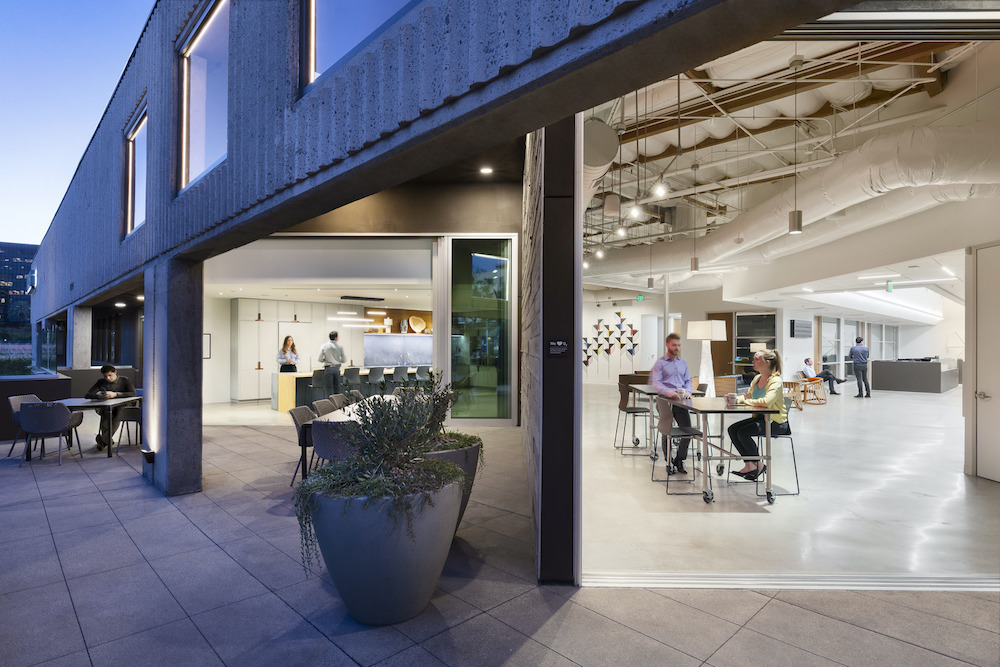
Ideally, simple floor plans and intuitive layouts can be accessible to all abilities. But the balanced solution lies in utilizing floors, walls and even ceilings for a greater variety of wayfinding strategies that also appeal to more senses, like tactile and auditory cues. This can take the form of diversifying patterns, shapes and textures along floors and landscapes. It can also be achieved with biophilic design and other creative elements.
The RiverRock design included accent gabion walls and a sensory-minded art collection throughout its office, helping to create different touchpoints for defining the space. Users connect with a variety of wayfinding implements that are both active and subtle. Colors, textures and patterns all play an important role as part of the wayfinding.
A Larger Focus on Universal Design
In some ways, the discussion of neurodiversity and design is too limiting. In many ways, all the elements that support neurodiverse individuals also promote comfort and achievement in neurotypical individuals. As one size doesn’t fit all neural processes, the focus is on universal experiential design to ensure the space accommodates all individuals.
The common understanding of universal design takes into account the spectrum of physical abilities. However, to truly embody universal design, the conversation should also consider the spectrum of human thinking. Designing spaces to be more inclusive and accommodating for all is a critical step toward supporting individuals with neurodiversity.
It starts by making room for a wider variety of people at the table, asking the right questions and listening with empathy. When we design for the neurodiverse population, the environments become more inviting, easier to navigate and more responsive to emotional and cognitive needs, which enhances the experience for everyone.

